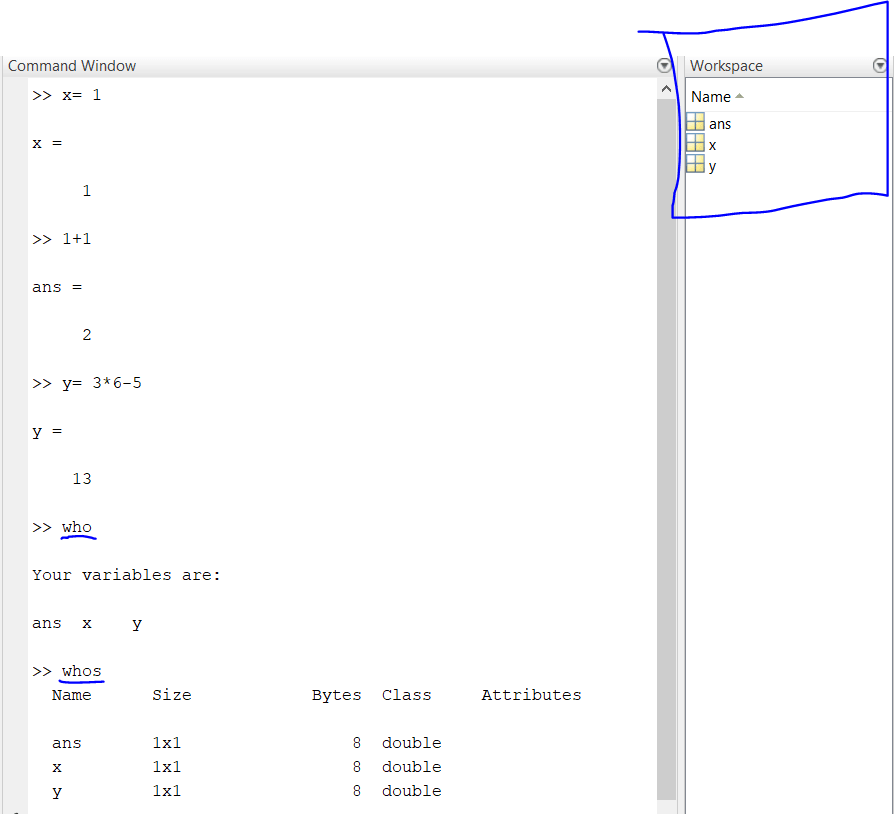

Returns a shifted to the left by k bits, equivalent to multiplying by 2 k. Get bit at specified position pos, in the integer array a The following table shows the commonly used bitwise operations − MATLAB provides various functions for bit-wise operations like 'bitwise and', 'bitwise or' and 'bitwise not' operations, shift operation, etc. The truth tables for &, |, and ^ are as follows − pĪssume if A = 60 and B = 13 Now in binary format they will be as follows − The symbols & and || are the logical short-circuit operators AND and OR.īitwise operators work on bits and perform bit-by-bit operation. Short-circuit logical operators allow short-circuiting on logical operations. The symbols &, |, and ~ are the logical array operators AND, OR, and NOT. Short-circuit − These operators operate on scalar and, logical expressions.Įlement-wise logical operators operate element-by-element on logical arrays. MATLAB offers two types of logical operators and functions −Įlement-wise − These operators operate on corresponding elements of logical arrays. The following table shows the relational operators available in MATLAB − Relational operators for arrays perform element-by-element comparisons between two arrays and return a logical array of the same size, with elements set to logical 1 (true) where the relation is true and elements set to logical 0 (false) where it is not. Relational operators can also work on both scalar and non-scalar data. For complex matrices, this does not involve conjugation. For complex matrices, this is the complex conjugate transpose.Īrray transpose. A' is the linear algebraic transpose of A. A and B must have the same size, unless one of them is a scalar. A.^B is the matrix with elements A(i,j) to the B(i,j) power. For other values of p, the calculation involves eigenvalues and eigenvectors, such that if = eig(X), then X^p = V*D.^p/V.Īrray power. If the integer is negative, X is inverted first. If p is an integer, the power is computed by repeated squaring.

X^p is X to the power p, if p is a scalar. A.\B is the matrix with elements B(i,j)/A(i,j). A warning message is displayed if A is badly scaled or nearly singular.Īrray left division. If A is an n-by-n matrix and B is a column vector with n components, or a matrix with several such columns, then X = A\B is the solution to the equation AX = B. If A is a square matrix, A\B is roughly the same as inv(A)*B, except it is computed in a different way. A and B must have the same size, unless one of them is a scalar.īackslash or matrix left division. A./B is the matrix with elements A(i,j)/B(i,j). More precisely, B/A = (A'\B')'.Īrray right division. A.*B is the element-by-element product of the arrays A and B. A scalar can multiply a matrix of any size.Īrray multiplication. More precisely,įor non-scalar A and B, the number of columns of A must be equal to the number of rows of B. C = A*B is the linear algebraic product of the matrices A and B. A scalar can be subtracted from a matrix of any size. A and B must have the same size, unless one is a scalar. A scalar can be added to a matrix of any size.

A+B adds the values stored in variables A and B. The following table gives brief description of the operators −Īddition or unary plus. However, as the addition and subtraction operation is same for matrices and arrays, the operator is same for both cases. The matrix operators and array operators are differentiated by the period (.) symbol. Array operations are executed element by element, both on one-dimensional and multidimensional array.

Matrix arithmetic operations are same as defined in linear algebra. MATLAB allows two different types of arithmetic operations − MATLAB allows the following types of elementary operations − Therefore, operators in MATLAB work both on scalar and non-scalar data. MATLAB is designed to operate primarily on whole matrices and arrays. An operator is a symbol that tells the compiler to perform specific mathematical or logical manipulations.


 0 kommentar(er)
0 kommentar(er)
